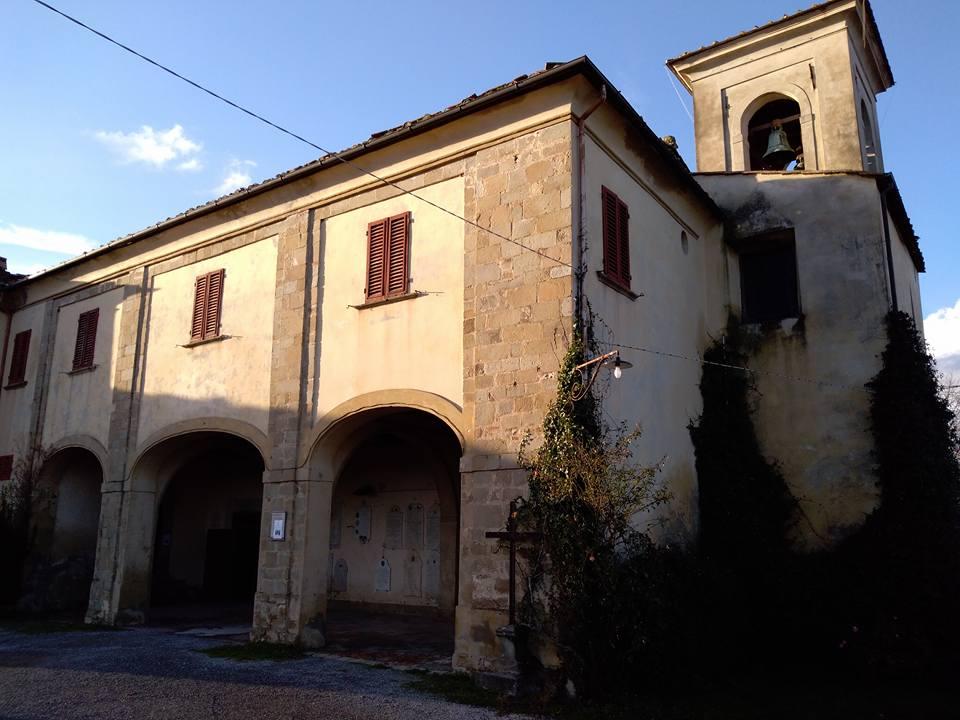
The church, dating back to the 16th-17th century, is on the remains of the oratory of Saint Lucy, which was enlarged when it assumed jurisdiction as a baptismal church. The reorganization of the town and the need to respond to functional needs of the residence of the religious led to the construction of the porticoed building on the south wall of the church in 1576. Here a new entrance to the church and to the rectory was opened. The walls of the portico are populated with tombstones of the faithful, according to a country tradition.
It has a single nave. The altars, dating back to 1710, are made of sandstone. Inside, there are eighteenth-century altars and paintings. The main altar is embellished by its unusual stucco crowning which includes an oil painting with the kneeling Virgin receiving the crown of Christ within an oval. Madonna is depicted with her head surrounded by a crown of stars and she is kneeling before Christ who is placing the crown on her head. Blessing Eternal Fatherwhile is behind her. The painting, which can be dated around the mid-18th century, is the work of an anonymous painter from Pistoia who seems to draw inspiration from Marchesini’s works or, at least, from his artistic environment. Below we find the eighteenth-century painting with “Saint Lucy with saints Anthony the Abbot and Luigi Gonzaga” by the Pistoian artist Pietro Marchesini, known as L’Ortolanino. The saint, who holds the symbols of her martyrdom in her hands (her eyes on an altar, the sword and the palm), looks upwards and she is irradiated by divine light and surrounded by cherubs. On the left we find the old and bearded Saint Anthony the Abbot with the book of the Holy Scriptures and the T-stick and the young Saint Luigi Gonzaga, while a white lily and, further back, a crown and a crossin are in the foreground.



